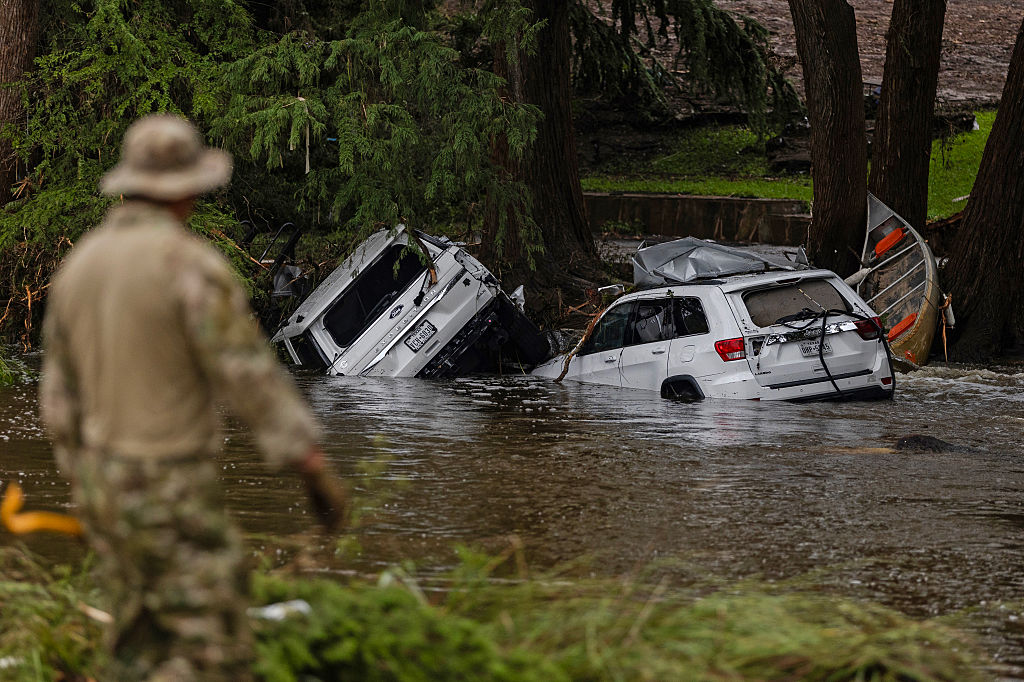Study Uncovers Predictors Of Individuals’ Preparedness For Natural Disasters And Trust In Disaster Assistance
School of Public Health research could inform new strategies to increase preparedness nationwide.
- Key finding: Adults 55 years and older have more trust in evacuation orders issued by the government than younger adults.
The catastrophic flash flooding in the Texas Hill Country over the July 4 holiday weekend is a somber reminder that the United States is one of the world’s most disaster-prone countries.
“In 2023 alone, the United States experienced 28 natural disasters that resulted in nearly $93 billion in damage,” said Dr. Christine Crudo Blackburn, a faculty member in the Texas A&M University School of Public Health. “In addition, the extreme weather events that caused them — floods, tropical cyclones, tornados, a winter storm, a wildfire and a drought with heat wave — are projected to become even more frequent and severe in future years.”
Now, a study by Blackburn and other health policy and disaster preparedness experts from Texas A&M has identified the factors associated with disaster readiness and trust in disaster assistance among individuals across the country.
This is important, she said, because preparedness saves lives. Experts state that most disaster-related fatalities and injuries could be preventable with appropriate preparedness actions, for example.
To that end, the national Healthy People 2030 program includes objectives for increasing the proportion of adults who have an emergency disaster plan and know how to evacuate in case of a disaster.
“Prior to our study, however, there was little data on the measures that could address these objectives,” Blackburn said.
That’s because much of the research on individual preparedness was done prior to 2020, before financial instability, food insecurity and related factors were taken into account, and before the COVID-19 pandemic added a political dimension to disaster response, she said.
Survey Population
To learn more, the researchers conducted a cross-sectional survey in English and Spanish of 2,989 adults in the United States from April to June 2024. Their study was published in Public Health Reports and was supported by a Texas A&M University Health Science Center (Texas A&M Health) Seedling Grant.
Participants answered questions about whether they had an emergency kit and evacuation plan, knew where to get emergency information and had the supplies needed in the event of a natural disaster.

Findings differed from those of previous studies in the areas of age, race and political affiliation.
They also answered questions about how well they believed they could protect themselves and how much they could rely on community members, the local government and the National Guard during and after a disaster.
The respondents represented the United States population in terms of age, race/ethnicity, gender and Census region, Blackburn said.
They most often identified as female, non-Hispanic white, 34 years old or younger and living in the South. In addition, they had a high school diploma or less, had full- or part-time employment with an annual household income of less than $25,000 and identified politically as Democrat.
Findings
The study — like previous studies — found that those more likely to have an evacuation plan and emergency kit and to trust disaster assistance had one or more of the following characteristics: they were men, had previous disaster experience and worked part-time or full-time.
On the other hand, three areas stood out: age, race and political affiliation.
The study found that individuals 55 and older were more likely to say they knew where to access emergency information, how to stay safe during a natural disaster and that they trusted the assistance offered by local governments and the National Guard.
“While this result is not aligned with the findings of previous studies regarding preparedness, it does reflect research that showed that adults 55 years old and older have more trust in evacuation orders issued by the government than younger adults,” Blackburn said.
In addition, in contrast to previous findings, the study identified no meaningful relationships between disaster preparedness and race or political affiliation.
“For the latter, however, we also found that Democrats felt more confident than Republicans in their ability to access emergency information,” Blackburn said. “This raises questions about whether this finding relates more to a lack of knowledge or to a lack of trust in information sources, and we encourage future research on this given its implications for messaging in disaster preparedness and response efforts.”
The bottom line, she said, is that these findings could help public health officials develop strategies that increase preparedness across the nation’s many subpopulations.
In addition to Blackburn, others involved with the study were Dr. Matthew R. Boyce and Dr. Tiffany Radcliff all with the Department of Health Policy and Management. Blackburn and Boyce also are faculty affiliates with the USA Center for Rural Public Health Preparedness. Others were center director Dr. Jason Moats center program coordinator Mayra Rico, graduate student Kirk Niekamp and undergraduate student Elizabeth Thomas.
